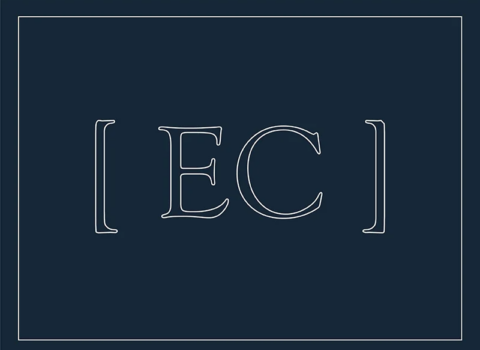From “Girl on a Motorcycle,” from the collection The Hard Crowd: Essays 2000–2020, which will be published in April by Scribner.
The Cabo 1000 was an annual one-day motorcycle race that began in San Ysidro, the last American town before the Mexican border, and finished in Cabo San Lucas, at the tip of the Baja Peninsula, approximately 1,080 miles south. In a car, this trip is four or five days of difficult driving, extreme weather, and harsh road conditions. The race included slowing down through Baja’s towns (not everyone obeyed) and stopping for water breaks, gas, and repairs. In order to average 100 miles per hour, the goal for finishing competitively, on the straights a rider needed to push it over the top, go as fast as her bike would go.
When I undertook this race, in 1993, I was twenty-four years old. I had been working on my Kawasaki Ninja 600 for months. It was the perfect size bike for the Cabo ride: powerful but small and lithe enough to handle well on mountain curves. To increase speed and performance, I upgraded the bike with stainless-steel aftermarket valves, a resurfaced cylinder head, a high-performance carburetor jet kit, and a four-into-one exhaust with an unbaffled canister. I had long discussions with friends about what kind of tires to choose, weighing the pros and cons of performance and durability. I would need a reasonably soft tire for traction and tight cornering, but anything too soft would be shredded halfway down the peninsula.
Little details like choosing the proper tint of helmet face shield and having some sort of system for cleaning it on the ride were important. Some people went with tear-offs, plastic adhesives that a rider could remove as each one gunked up with bugs and dirt. Wade Boyd, an Isle of Man veteran who had won the Cabo ride many times (one year infamously finishing on an almost toy-size race bike—a two-stroke 350), mounted an old, cut-open tennis ball on his handlebars to hold and keep moist a sponge for cleaning his face shield.
The last few days of preparation were hectic. The morning of our departure, my then boyfriend, our housemate Peter Waymire, known as Stack (short for Stackmaster, meaning he crashed a lot), and I had been up all night tightening and testing everything on our bikes. We rolled out of San Francisco at 6 am and arrived at sundown in San Ysidro, a small town with a Motel 6, a Denny’s, a few currency-exchange shacks, and a massive border station into Tijuana.
There was a riders’ meeting after dinner, and everyone congregated around the motel pool to hear Lee Jones, who organized the Cabo race, speak. I’m not using Lee’s real name, but he was nobility in the motorcycle scene. People enjoyed saying that he had been raised by Hells Angels, and they said it with reverence, as if he’d been raised by wolves. When you signed up to go to Cabo you wrote him a check (it was a hundred dollars the year I participated). The money supposedly went to the elementary schools of Baja, and no one ever questioned the legitimacy of Lee’s philanthropic dealings.
After the meeting, I went to bed. I drifted off but was woken periodically by voices outside; a former warehouse roommate of ours named Sean Crane was talking to someone about the advantages of synthetic engine oil. Sean rode on the street as if he was on a racetrack: he was gifted, but took huge risks. During the Cabo ride the previous year, he had been dicing with another rider, a guy from Los Angeles whom, as it turned out, no one else really knew. Sean had out-braked the other guy on a blind curve overlooking a cliff, and the other rider crashed, toppled over the cliff, and had to be airlifted to a hospital in San Diego. He ended up losing a leg. Sean kept going.
At 4:30 am we lined up in the dark parking lot of the Motel 6, all twenty-nine of us revving our engines like a swarm of angry bees. Those in front, going up to 160 miles per hour, would reach Cabo by sundown, as others rolled in all through the night, fifteen or twenty hours from now. I crossed the border into Mexico and hit the first long incline up a dark mountain, my headlight slicing through the ocean fog. I was somewhere mid-pack and trying to stay focused, going over what I knew, what I’d been told, what to expect, how to be ready.
In the mountains between Tijuana and Ensenada, the fog was dense. The roads were slick and full of hairpin turns. By the time I reached Ensenada, I was through the worst of the fog, but the dark, sleeping city had its own set of hazards. Speed bumps were not painted as they are in the States, and I flew over a set of them going eighty miles an hour, which meant sailing through the air and then—because the suspension on the bike was dialed down for stiff and precise cornering—a very hard landing.
By noon I was approaching the halfway mark. I’d been passed by, and had passed, a few riders, and knew I was still somewhere in the middle of the pack. Five hundred miles down the Baja Peninsula, just before Guerrero Negro, the town that spans the north-south border between Baja California and Baja California Sur, is the longest uninterrupted straight on the Transpeninsular Highway. I went into it going 120, tucked down into my fairing, and rolled the throttle to its pegged position. I hit 142 miles per hour, the fastest I’d ever gone.
I could see the giant metal sculpture that marks the north-south border, a fifty-foot-tall steel structure that I’ve heard is meant to be a bird but which looks more like a grounded oil dredge. I rolled off the throttle just a touch. Up ahead on the right shoulder was a group of parked motorcycles. I recognized Wade Boyd, who should have been miles and miles ahead of me, and another guy we called Doc. One motorcyclist pulled onto the highway suddenly. Either he didn’t see me or he didn’t realize how fast I was going. It was someone I knew from our biker bar in San Francisco, the name of which—Zeitgeist—was stitched into the back of his red-and-black race leathers. After many hours of solitary and intense concentration, I was pleased to see those familiar and ridiculous leathers. But then reality set in—that he was going only 30 miles per hour and I was going 130—and I was approaching in no time. I swerved to avoid him. Just as I got around him, I saw that the road took an unmarked and extremely sharp turn. There was a truck coming in the other direction. I was going way, way, way too fast to lean the motorcycle hard enough to cut the turn, and I didn’t want to get smeared underneath it trying. I opted to ride off the road.
Beyond the pavement was a shallow, sandy ditch, which in hindsight seems unbelievably lucky—most of the way down the peninsula, the road is jagged rock on one side, ocean cliff on the other, or rocks on both sides. But hitting such a radical surface change at 130 miles per hour, even if it is sand, will have consequences, and as I left the pavement, the bike threw me. My recall of this event is fractured: I see the tire leave the road, and then I am up in the air over the bike, separated from it, high above the instruments and handlebars, and then there’s a quick and violent descent to a brutal, thudding impact, which must have been my head, as I later determined from the massive crater in the back of my race helmet. And then I’m bounced up again, my body whomped to the ground, hip bone first, and that jutting, vulnerable bone feels like it’s become a bag of dust. And then skipping back up, finally rolling to a stop. I screamed inside my helmet as pain rushed through my body. You always hear that this is when the endorphins kick in, so people aren’t even aware they’re hurt, but I felt vivid, terrible pain.
Zeitgeist, the rider who’d pulled out in front of me, came running up. I tasted blood in my mouth and tried to sit up. The bike had turned end over end twice, miraculously not hitting me in the process, and bits of plastic fairing, foot pegs, a brake lever, and other shrapnel littered the sandy ditch. There was gas and oil everywhere. I was disappointed and angry. I couldn’t believe I’d crashed after all my hard work. I kept thinking, My bike, my bike. But then I felt like I was going to vomit and said, “Could you take my helmet off me?” I tried to take the helmet off myself, but the desire to faint was overriding the desire to puke. I woke with the rider we called Doc holding me up.
Doc was actually a doctor. He had a family practice in South San Francisco, I think, but I heard later that he had become a prison doctor at Folsom. Doc carried a black medical bag stuffed with pills and exuded two opposing but equally creepy qualities: he always appeared sedated, with heavy eyelids and a gentle, almost half-conscious giggle, and he rode with infamous aggression. People knew not to try to pass him because he’d cut them off, taking up the whole road. Despite these quirks, I was comforted that a real doctor was there.
Just then an ambulance came wailing toward us and launched off the road into the ditch, pulverizing all the expensive fiberglass bodywork that had come off my Ninja. Doc and Wade hurriedly picked me up by the armpits, and Doc called to the men getting out of the vehicle, which looked like a Sixties Boy Scouts van with a red cross painted on its side: “She’s fine. Everything is just fine. No ambulance.” Baja medical clinics were rumored to be an expensive scam. I don’t know whether this was true, but Doc and Wade believed it. The two of them carried me across the road to an old hotel.
As they laid me down on the steps, I heard Doc, in his half-sedated voice, mumble, “Oh gee, gosh, that’s just a shame.” I looked across the road and saw my busted-up Ninja in the back of a pickup truck. The truck turned onto the highway and accelerated north. My motorcycle had been stolen, and there was nothing I could do.








































































































